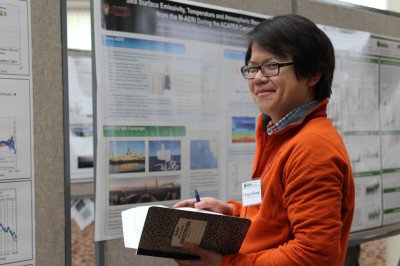Reminder: 2016 Science Team Meeting presentations need to be uploaded here by May 27.
 About 240 Atmospheric System Research (ASR) scientists and Atmospheric Radiation Measurement (ARM) Climate Research Facility staff met May 2 to 5 at the 2016 Joint User Facility/Principal Investigator Meeting in Tysons Corner, Virginia, to review progress from the past year and plan future research directions.
About 240 Atmospheric System Research (ASR) scientists and Atmospheric Radiation Measurement (ARM) Climate Research Facility staff met May 2 to 5 at the 2016 Joint User Facility/Principal Investigator Meeting in Tysons Corner, Virginia, to review progress from the past year and plan future research directions.
The three-and-a-half-day meeting included scientific presentations on everything from combining modeling and observations, to secondary organic aerosols, to ice nucleation. Plenary presentations by U.S. Department of Energy (DOE) program managers for ASR, Ashley Williamson and Shaima Nasiri, shared information on the numerous workshops held in the past year that are being used to develop ASR’s updated overall science vision and strategy. These include the ACME/ARM/ASR, or AAA, Workshop, New Strategies for Addressing Anthropogenic-Biogenic Interactions of SOA in Climate Models, ASR Marine Low Clouds Workshop, and ASR Atmospheric Convection Workshop. Another workshop on Absorbing Aerosols was also held in 2016.

In total, there were 20 plenary presentations, 31 breakout sessions, and 169 science and facility posters. There was also an ARM Data Booth intended to draw in people to learn about ARM data.
You can view the presentations and posters on the ASR meeting website.
This work was supported by the U.S. Department of Energy’s Office of Science, through the Biological and Environmental Research program as part of the Atmospheric System Research program.

